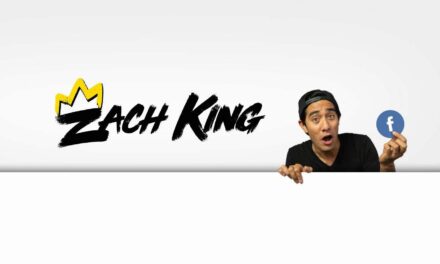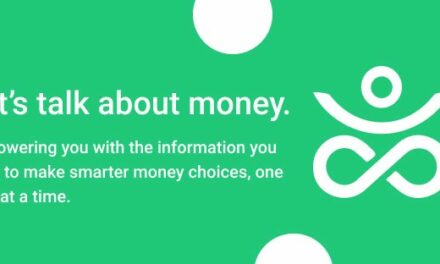When you go from creator to entrepreneur, you encounter a new vocabulary. From A/B testing to white paper, the terms and jargon are vast. To help, I put together a glossary of need-to-know content entrepreneur terms in business, digital content, and more
Going from creating content to running a business requires entrepreneurs to know these 60+ terms in business, marketing, and more, via @MarcMaxhimer. Share on XA
A/B Testing – a method of publishing/distributing two versions of a web page, subject line, or newsletter to determine which one performs better.
Above The Fold – the part of your website visible on the user’s screen without scrolling (references portion of the newspaper that appeared in vending boxes to attract buyers).
Affiliate Marketing/Sales – a compensation model for successful sales marketing that pays a commission of the sales earned through links shared by influencers or other content entrepreneurs. The commission fee is designed to incentivize them to find ways to promote the company. Affiliate income works like this: if you click on my affiliate link and sign up for the products or services I recommend, then I earn a commission.
API (Application Programming Interface) – API allows two applications to communicate with one another to access data. Every action you take on your phone, like sending a direct message or checking the score of the baseball game, uses an API to access and deliver that information. APIs are behind the scenes and largely responsible for all of the interactivity we’ve come to expect in our world.
Audience-Building – the process by which a content entrepreneur develops a relationship with their followers, fans, subscribers, etc., to build trust, provide answers to pain points, and fill desires. Occurs through multiple processes as part of value exchange between the creator and the audience. It is the goal for content entrepreneurs, as audiences are their primary business asset that makes revenue streams possible.
B
B2B (Business to Business) – one business exists to sell to another business, such as a wholesaler and retailer. For the content entrepreneur, this could describe the relationship between your content brand and a sponsor’s brand.
B2C (Business to Consumer) – a business that sells products and services to individual consumers. For the content entrepreneur, this could involve their brand (the business) selling newsletter subscriptions to the individual public.
Backlinks – when another site publishes a link to content on your website. Backlinks are a factor in search engine optimization. They can indicate to the search engines that your site’s content is valuable and/or credible.
Back Office – the non-client-facing operations of a company. For the content entrepreneur, this is the administrative work done to keep a content business running. Invoicing and paying contractors or freelancers, selecting the right email service provider or learning management system, evaluating data and analytics, or working with affiliates would all be back-office operations.
BMC (Business Model Canvas) – a strategic management tool to quickly and easily define and communicate a business idea or concept. It is a one-page document that works through the fundamental elements of a business or product, structuring an idea in a coherent way.
BPI (Business Process Improvement) – an approach to identify and evaluate inefficiencies within the organization. It redesigns existing business tasks, improves their effectiveness, enhances the workflows involved, and optimizes performance.
Break-Even Run Rate – a business’ break-even point is when revenues equal costs. Your business brings in the same amount of money to cover all expenses to run your business. When you break even, your business has neither profits nor losses.
This formula is useful in determining the pricing of your products or services: Fixed Costs / (Sales Price Per Unit – Variable Costs Per Unit) = Break-Even Point Per Unit.
Content entrepreneurs without a product could simplify the formula to All Revenue Streams – Expenses = 0.
Buyer’s Journey – the road a prospect travels to become a buyer, similar to a marketing funnel, covering three stages:
- Awareness: The buyer learns the brand exists that relates to their needs.
- Consideration: The buyer considers options and evaluates the brands to determine which could meet their needs.
- Decision: The buyer chooses the brand from which to buy.
C
Cold, Warm, Hot Outreach – when you contact someone in hopes of doing business with them. Cold outreach is when you contact someone who doesn’t know or have any formal or informal connection with you or your business. Warm outreach happens when you and your contact have at least a modicum of familiarity. Hot outreach occurs when you connect with someone who has expressed a direct interest in working with your brand.
Conversion Rate – percent of those who completed a goal desired by the business (conversion) as compared to the total number who saw the opportunity. For example, the number of visitors who complete the form on a landing page divided the total number of visitors to the page. A high conversion rate means people want what you’re offering, and they’re easily able to get it.
CPC (Cost Per Click) – the price a business pays for each click on their digital display ads, also known as pay-per-click (PPC).
Customer Acquisition Cost – the total cost, including research, marketing, and advertising, associated with successfully getting a consumer to buy your product. To calculate, divide total costs by the number of customers within a designated time frame.
CMS (Content Management System) – the software for creating, managing, and optimizing your customers’ digital experience on your website. CMS software allows you and your team to collaborate in the creation, editing, and production of digital content on the same platform. The most popular CMS system for content creators is WordPress.
CRM (Customer Relationship Management) – the software that provides a central place where businesses can store and access customer and prospect data, track customer interactions, and share this information internally. The goal is to understand how your audience interacts with your business and respond accordingly. There are three main types of CRM systems: collaborative, analytical, and operational. Popular vendors include HubSpot, Salesforce, Zoho, Pipedrive, Freshworks, and Netsuite.
CTA (Call To Action) – a prompt that encourages the user to take the specified action, such as “Sign Up” or “Buy Now.” It often includes a button or hyperlink to make it easy for the user to act. CTAs can be included in websites, newsletters, podcasts, social media posts, etc.
CTR (Click-Through Rate) – the percent of total viewers or recipients who click a link in a content asset, often used to measure success of newsletters, websites, social media posts, ads, etc.
D
DAM (Digital Asset Management) – a digital storage tool that helps businesses organize, store, and share their collection of digital resources or assets.
Drip Campaign – a method used to nurture prospects over time through the marketing funnel. Often executed through email marketing, pre-written content is sent automatically at predetermined times in the expected buyer journey to engage these contacts with the right content at the right time.
E
Editorial (or Content) Calendar – a tool used by content creators to plan the development, publication, and promotion of content, including topics, responsible persons, distribution channels, etc.
Email Marketing – a form of marketing to people in your database to make them aware of new products, discounts, loyalty programs, and other services.
Email Segmentation – the division of your subscriber list based on different criteria. Often used as a personalization tactic to deliver more relevant content to subscribers based on their geographic location, interests, purchase history, or other attributes.
Evergreen – the content that never goes out of date. Evergreen content is attractive because it remains fresh for a prolonged time, so it can drive more traffic, including search engine visitors, and has a lower maintenance cost.
F
Feedback Loops – the process of outputs becoming inputs, and using results to inform future decisions and behaviors. Feedback loops are helpful to make informed customer-responsive decisions.
Fintech – a term for financial technology that provides automated and improved financial services for businesses, such as PayPal, Apple Pay, Transferwise, and Payoneer. Also includes digital lending and credit services such as Kabbage.
I
ICP (Ideal Customer Profile) – definition of the perfect customer for your business, also referred to as an ideal buyer profile. Used to adjust and plan marketing and lead-generation tactics.
Inbound Marketing – inbound marketing centers on motivating customers to come to your brand after consuming your content. It is usually more subtle than traditional advertising or marketing and focuses on convincing over time a particular group of individuals to make a purchase. It involves creating informative content targeted at specific audiences, written to help solve consumers’ problems in interactive forms such as social media posts, blogs, reports, webinars, etc.
Infographic – a visual representation of data presented in a format more engaging than text-only, used to communicate complex information in an easy-to-understand overview. Viewers like or share them three times more than other content types, according to Venngage.
K
KPI (Key Performance Indicators) – quantifiable measures to evaluate effectiveness of programs, assets, strategy, etc.; helpful to understand if efforts are meeting expected goals and if not, make adjustments.
L
Landing Page – a web page where a consumer lands after clicking on a link, often used in marketing as a singularly focused page as part of a particular CTA elsewhere in exchange for a special offer, content, promotion, etc.
Lead Generation – the process of attracting prospects (i.e., leads) who will provide some contact information (see landing page above as example) and enter the nurture process so marketing and sales can convert them into a customer.
Lead Magnets – a marketing term for a content asset, free offering, etc., given in exchange for the recipient’s contact details. For example, lead magnets can be trial subscriptions, samples, white papers, e-newsletters, and free consultations. The goal is to acquire the prospect’s contact information so they can be contacted and eventually become a customer. For content entrepreneurs, the conversion goal could be becoming a subscriber.
Lead Nurture Program – the process of establishing and maintaining relationships with prospects as they consider buying a company’s product. For example, you could send emails with tips on how to use the product or recent updates made to service offerings.
Listening Posts – a point in the audience-building process where companies can collect and analyze feedback from their customers. For the content entrepreneur, this is a way to ensure that your content and content tilt differentiate your brand. Examples include listening on social media, customer surveys, talking directly to customers, employee feedback, etc.
LMS (Learning Management Systems) – software for the administration, documentation, tracking, reporting, automation, and delivery of educational courses, training programs, or learning and development programs.
M
Media Kit – a package of information about a company, its new product, service, or other newsy item to give to reporters. Could include company bio, news release, images, etc. Media kits also are an informational tool for potential sponsors and advertisers that detail the media outlet, content calendar, subscriber numbers, total impressions, publication frequency, etc.
MVA (Minimum Viable Audience) – smallest potential market (audience size) to sustain the business.
MVP (Minimum Viable Product) – smallest or least product (or new feature) needed to validate customer demand and receive feedback prior to developing a full-featured version.
Mission Statement – the purpose or why of your business that resonates with your audience.
N
NFT (Non-Fungible Token) – a one-of-a-kind protected asset, such as art, music, in-game items, videos, tickets, etc., that tracks and proves ownership. Non-fungible means that it cannot be replaced with something else. Frequently bought with cryptocurrency, and are recorded and located on the blockchain. Original NFT creators/owners can write into their selling agreements that they earn a percentage of future sales of the NFT.
Niche Down (or Niche) – narrowing your focus, usually from a broad audience to a smaller one, part of an overarching marketing strategy. Your content tilt likely is an example of niche down.
O
Omnichannel Marketing – delivering a consistent, personalized experience for an audience across all channels and devices. The main goal is to make the audience’s experience as easy as possible and consistently engage with them no matter what platform or channel they’re on. Applicable for content entrepreneurs who have built their audience and have a minimum viable audience before diversifying into other platforms.
Onboarding – the process of welcoming new subscribers, prospects, customers, or employees to a company. Customer onboarding usually involves a welcome sequence to introduce them to the brand, its products in an attempt to encourage loyalty and advocacy.
Open Rate – the number of recipients who open an email divided by total number of recipients. Many people look at their email open rate to determine the success of their email strategy. To this point, many content entrepreneurs are moving away from the use of open rate as a KPI due to Apple’s iOS privacy changes which makes measurement of engagement inconsistent. As a remedy, many content entrepreneurs are turning to click-through rates to measure engagement.
Outbound Marketing – proactively reaching out to consumers to get them interested in a product. Outbound marketing typically has a more aggressive, wide-sweeping approach with the expectation that at least some people will convert. It is often displayed in magazine ads, billboards, TV ads and is meant to be passive.
P
Personal Brand – an individual’s brand, public-facing identity.
Persona – a fictional character who represents the primary characteristics of your target audience; helps stay focused on who you’re trying to reach. A persona can detail how they live, what they want, do, etc., as it may relate to your business.
Product Launch – release of a new product to market.
Prospecting – identifying potential customers who may be interested in your product or service.
R
Repurpose Content – reusing all or elements of existing content, usually in a different format, to extend its reach (i.e., turning a blog post into an infographic). Integrating repurposing into your content strategy can lower costs and expand audience reach.
ROI (Return On Investment) – attributing the impact of expenses on profit and revenue growth; it measures how well the cost of doing something, like marketing, affects the bottom line. Typically, ROI is used to justify budget allocation for ongoing and future campaigns and initiatives.
For the content entrepreneur, there are different calculations you can use for ROI:
- Audience ROI – total revenue divided by total downloads (or engagements, views)
- Content ROI – total revenue divided by total number of content pieces
- Time ROI – total revenue divided days in operation.
S
Sales Funnel vs. Marketing Funnel – marketing funnel narrows prospects through a sequence – awareness, interest, consideration, intent, evaluation, and purchase. Sales funnel narrows prospect through this sequence – lead capture, sales process, order/upsell, ascend.
SEO (Search Engine Optimization) – the art and science to improve the content’s rankings on search engine result pages (SERP), such as Google.
SMB (Small and medium-sized business) – small businesses employ 100 or fewer employees, while medium businesses employ 100 to 999 employees.
SME (Subject Matter Expert) – authority in a particular area or topic.
Social Tokens (also called Community Tokens or Creator Coins) – branded cryptocurrency for creators that are true products of Web3 and directly connect the creators and consumers of content. Together, the creator and the community provide value. A community token’s value comes from:
- Transactions – Tokens can be used to purchase goods and services.
- Access – Token holders can gain exclusive access to content and experiences.
- Rewards – Creators can recognize fans based on their contributions to the community with tokens or how many tokens they hold.
- Discounts – Community members can receive coupon codes or discounts based on how many tokens they hold.
Software or Tech Stack – software that supports your business, from the operating system and web servers to APIs and programming frameworks. Each component provides a layer for their compatibility, and bundling them makes them easier to download and deploy at once.
Sponsored Content – content published in exchange for payment from a brand. It’s a type of native advertising that reads and appears similar to the other content on the publishing site. Publishers should label or disclose in some way that it is sponsored content.
Squeeze Page – a type of landing page used to collect just email addresses from visitors who are potential subscribers. Often shorter, to the point, and features the bare minimum to keep visitors from overthinking. Also commonly referred to as a sign-up page, a conversion page, or a lead-gen page.
Style Guide – a style guide is a digital rulebook that specifies every aspect of the look and feel of your brand. Includes specific colors, fonts, images, logos, grammar, spelling, formatting, etc. It can also include descriptions of tone and voice as well as brand messaging. Apart from being used internally, a brand style guide is shared with partners, media, and agencies to brief them on how to communicate your brand properly and consistently.
T
TAM (Total Addressable Market) – the overall market for a product or service; also referred to as total available market.
U
Unique Selling Point – the essence of what differentiates your product or service from competitors; also known as unique selling proposition.
V
Validation – market validation is the process of determining if there’s demand (and possibly how much) for your product in your target market. For the content entrepreneur, this can mean testing out your content tilt to see if it resonates with audiences.
Value Proposition – what a brand has to offer a customer, the benefit they can expect to receive.
Vision Statement – a descriptive picture of a desired future state. What you hope to achieve and what your goals are in the long-run, generally five to 10 years.
W
Web3 for Content Creators – the business model where the creator/brand shares in their financial success with the community and fan base. This was almost impossible until the creation of NFTs and community tokens.
Whitelisting – adding an email address to an approved sender list so their emails never go to the spam folder; an indicator the recipient trusts the sender.
White Paper – authoritative guide that usually discusses a pain point or challenge and a proposed solution; usually lengthier content; released for free or as an information exchange (i.e., become a subscriber) or as a paid white paper.
Special thanks to The Tilt community’s Corey Cachola, Dr. Stacey Gonzales, Ashley Stryker, and Dylan Redekop for their input.
About the author
Marc Maxhimer is the Partnerships & Publishing Coordinator at Tilt Publishing. He holds a bachelor’s degree in English and mathematics education and a master’s degree in educational administration. He previously taught middle school for 16 years. Marc lives in (and loves all things) Cleveland with his wife, two daughters, and dog Wilson. He looks forward to helping any content entrepreneur publish their book.










